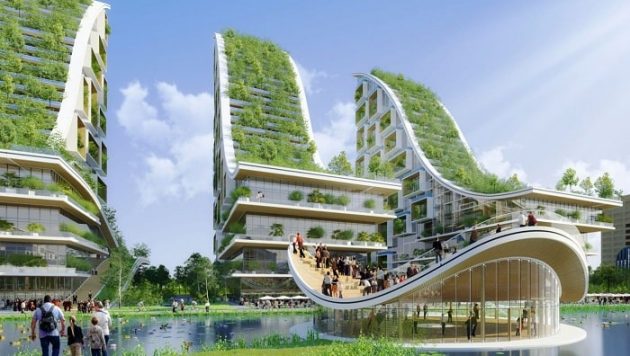The construction industry is responsible for up to 40% of all carbon dioxide emissions in the US alone, or equivalent to 18% of the total global emissions, according to IPCC. Not only that, the International Energy Agency has also reported that the construction industry accounts for 40% of energy consumption in the world. The burden lies on the industry with the growing demand for sustainable construction methods to re-think its current methods and look for alternatives that cause less negative impact on the environment.

Growth of Green Construction
More and more countries have not only considered green construction but also actively implemented it. Now more than ever, green building is the standard rather than the alternative. A green building is defined as any construction project that preserves the environment of the construction site while serving a purpose and making a positive impact on its surrounding environment. After all, the impact of construction happens not only during the actual construction but also in maintaining the building itself.
It’s clear – green construction is non-negotiable. Aside from the positive impact on the environment, the economic benefits are also glaring. In Canada, for example, green construction has generated more than 297,000 full-time jobs and is now worth over $23 billion. This figure is impressive; it is more than the oil, mining, and forestry industries were able to produce combined. Green initiatives are, therefore, not hostile to the economy, as many (especially critics) might have feared initially.
The rise in green buildings is also widely supported by consumers. In fact, many consumers are more likely to support businesses that take initiatives at developing green infrastructure, whether it is in building residential properties, malls, or offices. Home buyers are also seeking sustainable solutions and want to contribute to the preservation of the environment by choosing construction companies that make the concrete steps toward that.
Putting it into practice
In the US, green initiatives in the construction industry are slowly but gradually becoming more widespread. In fact, the Title 24 California Building Standards Code is one of the best examples of this effort in the legislative level. It refers to a broad set of requirements that must be observed in the construction of a building. It encompasses the design, choice of materials, construction techniques, structural, electrical and mechanical systems.
To ensure compliance for this strict building code in the state of California, a title 24 consultant will be able to ensure that your building satisfies energy compliance needs during construction. They will be working closely with the architects, contractors, and homeowners to plan the entire construction process from start to finish ensuring that it is compliant with the green energy code. This is a crucial step before submitting the design and building plan to the building department for approval.
There are several examples of green and sustainable construction techniques that are now being implemented in the US, and in other parts of the world. One of them is the use of solar energy. In most cases, solar energy is built into a hybrid system alongside coal-based power to tap into a renewable energy source. Another example of a green construction is the modular building technique. This method of construction uses up less material, less time, and higher efficiency.
Other examples of green construction techniques include IoT integrated automated building systems, solar thermal cladding, precast concrete slabs, green roofs, and more.
Why Green Construction Is the New Norm
The most evident reason to switch to green construction methods lie in the economic benefits. While this might be hard to believe given that the initial cost of green construction is higher than traditional construction methods, this is actually disproven by construction experts. If there is any difference in the cost of construction, it is very minimal. And the additional cost is only attributed in the design and construction phase.
Regardless of the cost difference, the long-term economic benefit is worth the initial cost since these buildings are more cost-efficient to maintain. In addition, the rise in demand for green buildings would mean that these properties can incur higher rental fees or cost more to sell.
The social impact of green construction is also something worth considering. In various parts of the world, governments are offering tax incentives to companies and projects that use green methods. There are also a lot of countries that have implemented green construction as a policy. If you were to exploit these incentives, you could easily recoup the added cost of the construction making it a win-win scenario.
Last but certainly not the least, the positive impact to the environment should not be dismissed. This is the primary motivating factor behind why legislative bodies in California have pushed the Title 24 code – they understand the level of impact that construction has on the environment. By making it a standard, it will aid in not only reducing environmental damage but also encourage preservation and protection.














